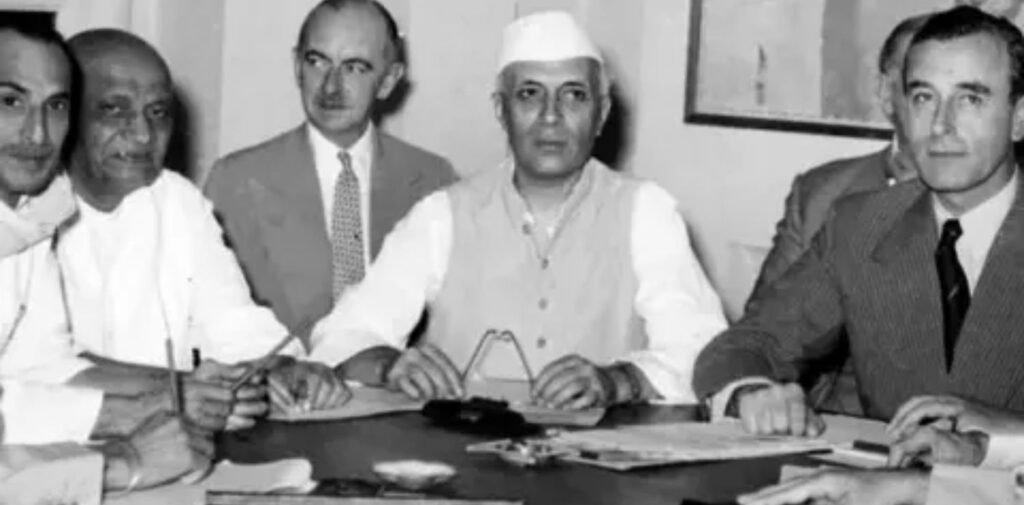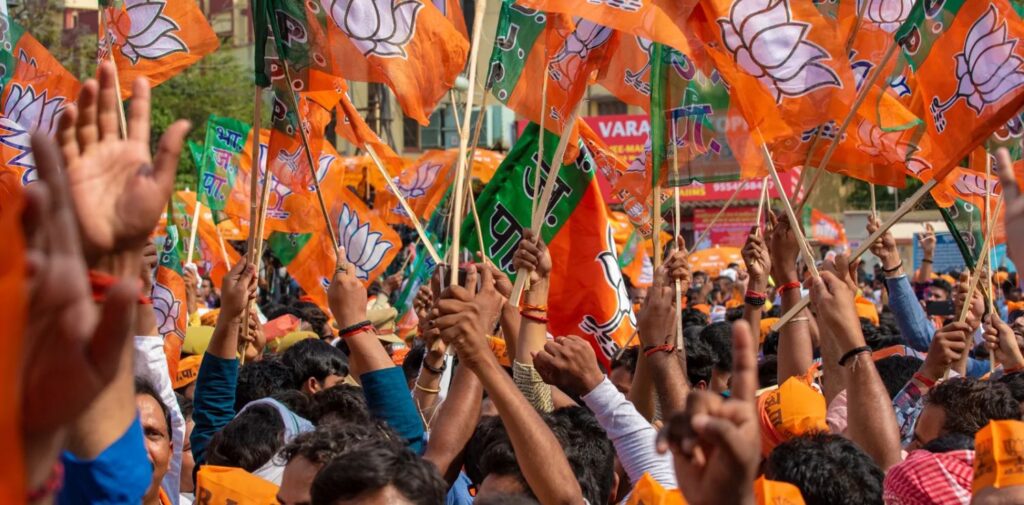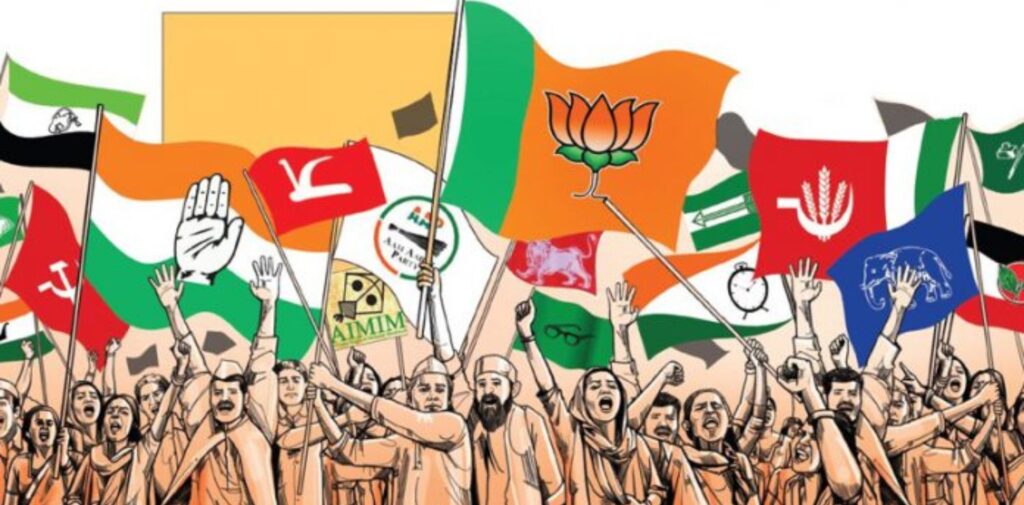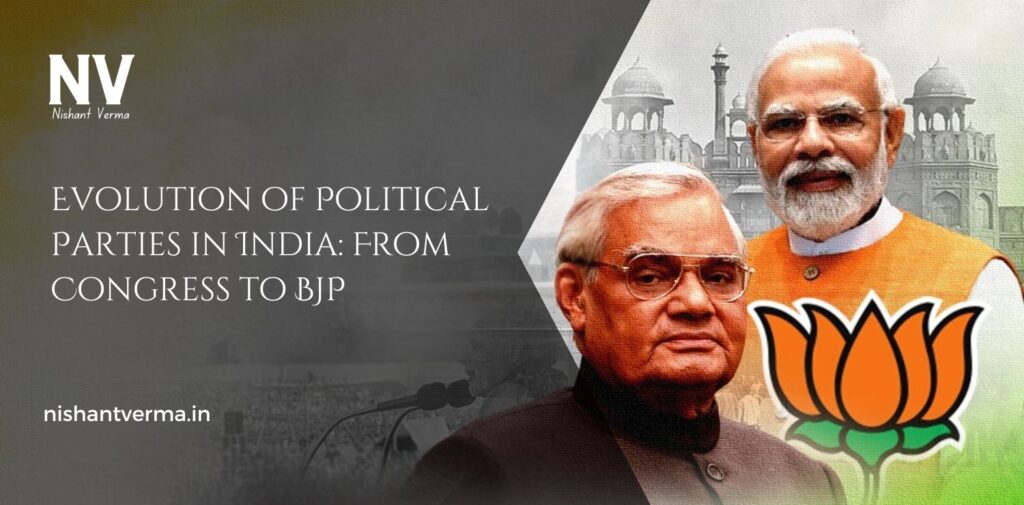India’s political landscape has gone through many changes since the country gained independence in 1947. The two main political parties that have shaped India’s politics over the years are the Indian National Congress (INC) and the Bharatiya Janata Party (BJP). But how did these parties come to be? What role did they play in India’s history? Let’s explore the Evolution of Political Parties in India in a way that anyone, even a small child, can easily understand.
The Early Years of Independence: Congress Leads the Way
When India became free in 1947, the Indian National Congress (INC) was the most important political party. This party had played a huge role in the fight for independence from British rule. Some of the most famous leaders of India like Jawaharlal Nehru, Sardar Vallabhbhai Patel, and Mahatma Gandhi were members of the Congress party.
After independence, Congress was in charge of the government. It was the main party that helped shape India’s future. For many years, Congress believed in a policy of secularism (meaning no one religion should dominate), democracy (where people can vote and choose their leaders), and socialism (promoting equal opportunities for all people).
Under the leadership of Jawaharlal Nehru, the first Prime Minister of India, Congress led the country through its early years. The party also worked to remove the social issues that existed in the country, like poverty, caste discrimination, and illiteracy.

Challenges and Changes in Congress
Over time, Congress began to face some challenges. As the country grew, people’s needs and expectations also changed. Some members of Congress started to disagree on how the country should move forward. The party split into different groups, and this made it difficult for Congress to maintain its strong hold on Indian politics.
One of the most important moments in Congress’s history was when Indira Gandhi, the daughter of Jawaharlal Nehru, became the Prime Minister. She took strong actions, including the Emergency (1975-1977), when the basic rights of citizens were temporarily suspended. While some people supported her decisions, others were upset. After the Emergency, Congress lost power for the first time, and this led to the rise of new political parties.
Rise of New Political Parties
As Congress lost its hold on Indian politics, new political parties began to emerge. Some of the major ones were the Janata Party, the Communist Party of India (CPI), and regional parties based on language and culture. These parties tried to represent the changing needs of the people. For example, the Janata Party, formed after Congress lost in the 1977 elections, tried to bring together people from different political backgrounds to challenge Congress.
In the 1980s, regional parties like the DMK in Tamil Nadu and the TMC in West Bengal gained popularity. These parties often focused on issues specific to their region, like local languages, culture, and rights.

The Emergence of BJP: A New Political Force
In the 1980s, a new political party called the Bharatiya Janata Party (BJP) began to rise in India. The BJP was formed in 1980, but it had its roots in the Bharatiya Janata Sangh (BJS), which was founded in the 1950s. The BJS was a right-wing party that believed in promoting Hindu culture and values. When the BJP was formed, it became the main competitor to the Congress party.
In the beginning, the BJP was not very strong, and it struggled to gain support across the country. But as time went on, the party grew, and it started attracting more people, especially those who were unhappy with Congress’s rule.
One of the key turning points for the BJP was the Ram Janmabhoomi movement in the 1990s. This movement called for the construction of a temple at the site in Ayodhya, where a mosque once stood. The issue of religion played a big role in BJP’s rise, as they promoted Hindu identity and culture, which resonated with many people.
BJP Takes Power: 1990s to 2000s
The BJP came to power in 1996 for the first time, but their government was short-lived. However, in 1998, under the leadership of Atal Bihari Vajpayee, the BJP-led National Democratic Alliance (NDA) won the elections and formed a stable government. Vajpayee became the Prime Minister of India, and his government focused on development, infrastructure, and foreign relations.
The BJP also pushed for a strong India, and under Vajpayee’s leadership, India became a nuclear power by testing nuclear weapons in 1998. The BJP’s policies were seen as promoting Hindu nationalism, a belief that India should be a country where Hindu culture and values play a big role in shaping society.
During this time, India also saw a period of rapid economic growth, thanks to the liberalization of the economy, which was started by the Congress government in the early 1990s. The BJP continued this process and made India one of the fastest-growing economies in the world.
BJP’s Growing Popularity and Narendra Modi
In the 2010s, the BJP’s popularity increased even further. This was largely because of the rise of Narendra Modi, the Chief Minister of Gujarat. Modi’s leadership style was seen as strong and focused on development. He was able to connect with young people, business leaders, and the common man.
In 2014, the BJP, led by Narendra Modi, won the national elections with a huge majority. This was a big change because it was the first time in many years that a party had won so many seats. Modi became the Prime Minister, and the BJP began to dominate Indian politics.
Modi’s government focused on issues like digital India, Make in India (promoting local manufacturing), and Swachh Bharat (clean India). He also made bold decisions like demonetization (removing certain currency notes from circulation) and the implementation of the Goods and Services Tax (GST), which aimed to make India’s economy more modern and efficient.
Current State of Politics in India
Today, the BJP continues to be one of the most powerful political parties in India. Under Narendra Modi’s leadership, the BJP has won many state elections and maintained a strong presence in the country. However, Congress is still active and continues to play a role, although it is not as strong as it was in the past.
India now has a multi-party system, where many different political parties compete for power. Regional parties, the Congress party, and the BJP are the main players, but other smaller parties influence elections and government policies.

The Future of Indian Politics
As India moves forward, the political landscape will continue to change. New parties will rise, and old ones may fade. The BJP and Congress will likely continue to dominate, but people will always have the power to choose their leaders through elections. The future of India’s political parties will depend on how well they address the needs of the people and adapt to the changing world.
Conclusion: Evolution of Political Parties
The evolution of political parties in India—from Congress to BJP—has been a fascinating journey. From leading the fight for independence to becoming the largest political force in the country, the Indian National Congress played a crucial role in shaping India. But over time, new parties like the BJP emerged to challenge the status quo and bring new ideas to the table.
Today, India has a diverse political system, with many parties representing different parts of the country and various ideologies. Whether Congress or BJP, each party has contributed to India’s democracy and its ongoing growth. And as India moves into the future, the story of its political parties will continue to evolve, just as it has in the past.




